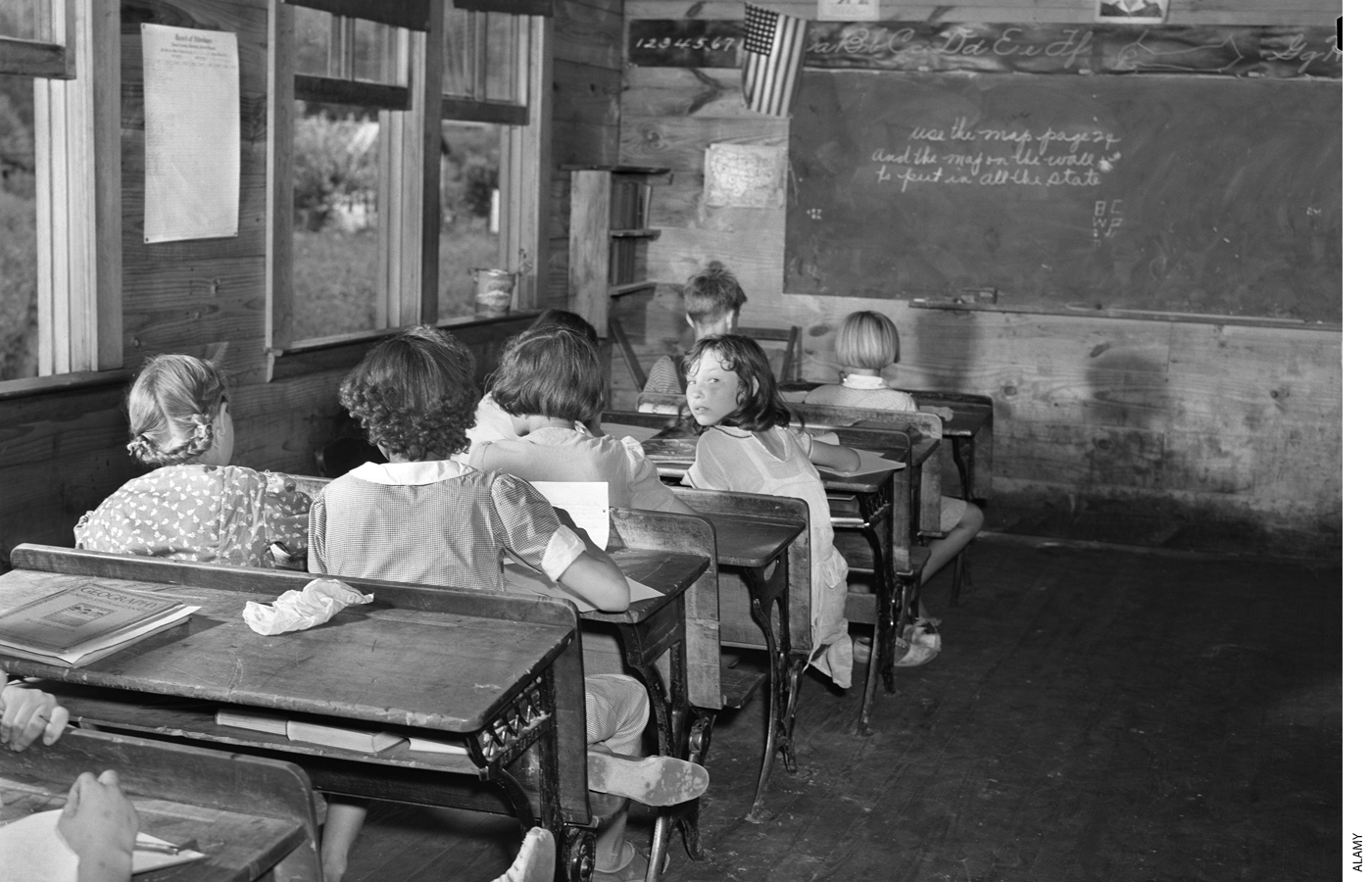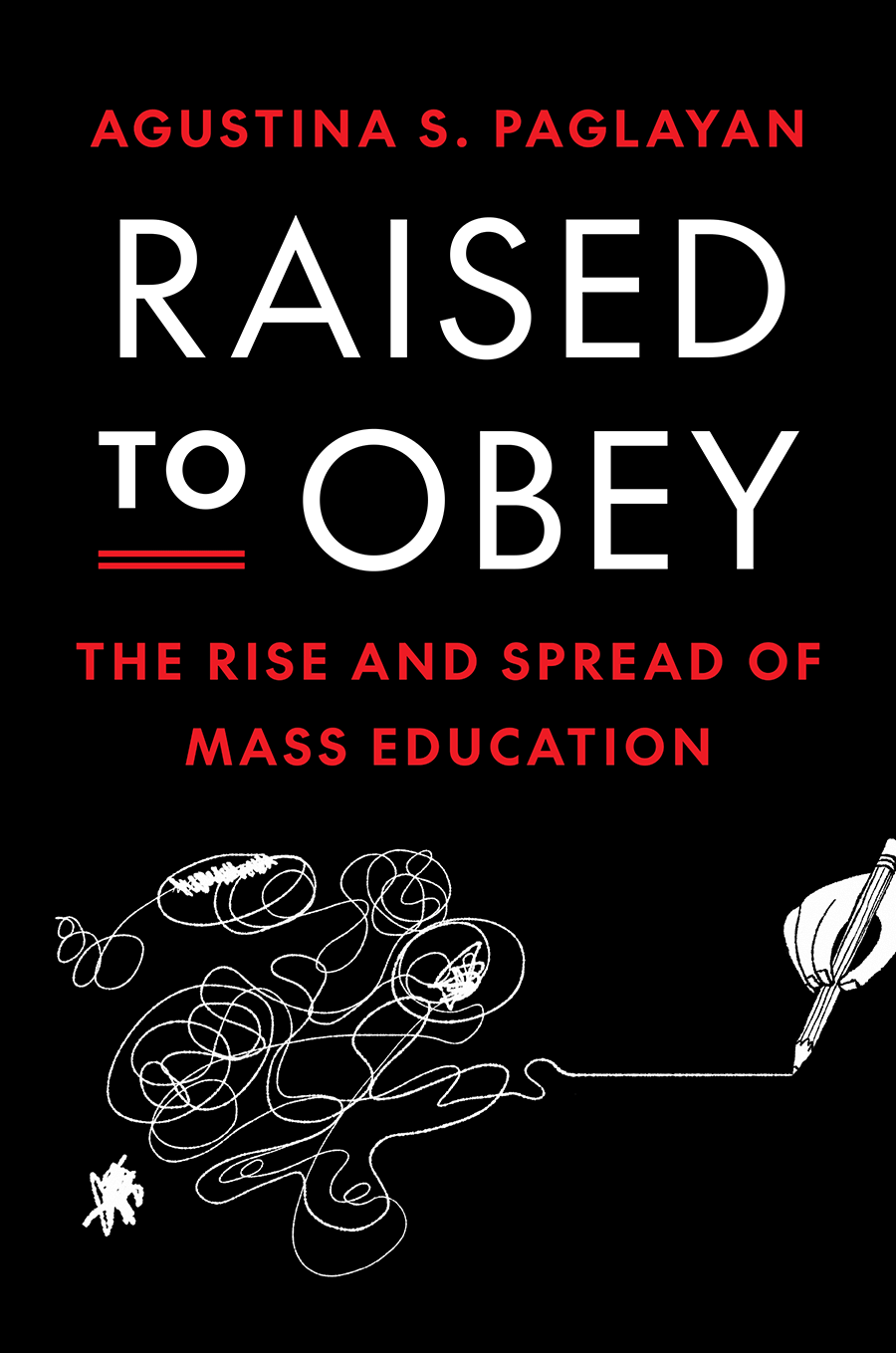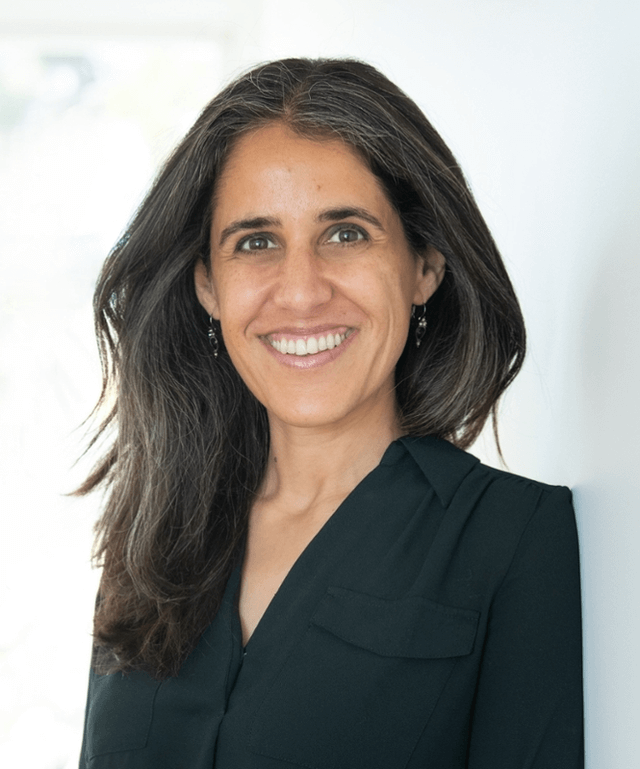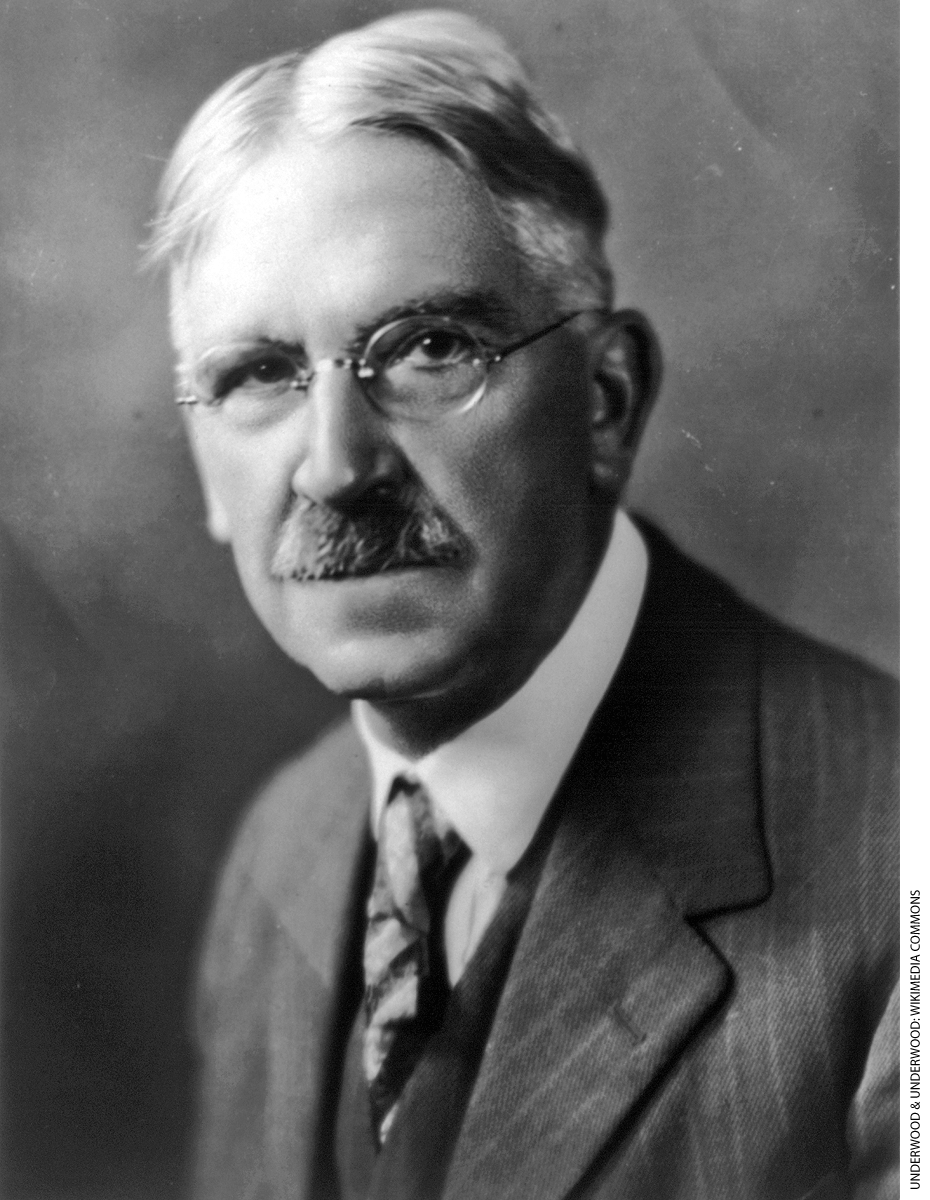
Near the end of her terrific new book, Agustina Paglayan notes that Donald Trump responded to the 2020 Black Lives Matter demonstrations by convening a “1776 Commission” to promote “patriotic education.” Republican state legislators took up his call, passing measures that barred instruction about racism and other “divisive concepts.” To Paglayan, a political scientist, these actions reflect a broader trend: whenever elites are threatened by mass protest, they turn to public education to shore up their own power. In authoritarian regimes, schools teach unquestioned fealty to the state; in democracies, they teach us to channel dissent through voting, not violence. But their purpose remains the same as it ever was: to ensure that citizens obey their rulers.
But aren’t some mass protests simply illegitimate, not because they undermine rulers but rather the rules we all need to live alongside each other?

by Agustina S. Paglayan
Princeton University Press, 2024, $32; 384 pages
I’m thinking of the January 6, 2021, assault on the U.S. Capitol, of course, and the larger effort by Trump and his supporters to overturn the results of the 2020 election. Paglayan is right: the founders of modern school systems feared popular revolt, and they imagined education as a defense against it. But they also worried about the rise of tyrants, who would destroy the rule of law and interrupt the peaceful transfer of power. To Paglayan, all disorder is created equal; she doesn’t distinguish between protest on behalf of democracy and protest that seeks to undermine it. Yet surely they’re different phenomena, with different implications for education.
Like Paglayan, I think schools should teach young people to question their government instead of awarding it automatic allegiance. But unless our citizens agree to a set of ground rules for conducting that inquiry, we can’t have inquiry—or democracy—at all. Despite everything that has happened in America to erode democratic norms, Paglayan doesn’t seem worried about them.
Nor does she make it clear who qualifies as an “elite” pulling the strings of education, or how we know what is motivating them. Trump cast his Make America Great Again movement in anti-elitist terms, promising to free the country from courts, newspapers, and academics who had allegedly imposed a decadent cultural order on the virtuous masses. Contrary to Paglayan’s claim, his 1776 Commission was a direct response not to the BLM protests but to the 1619 Project, an effort by the New York Times—and the decidedly left-wing authors it enlisted—to root American history in racism and Native American removal rather than in freedom and liberty. Likewise, the state legislators who banned “divisive concepts”—and, in several states, the 1619 Project itself—thought they were reclaiming public education from elites who had captured it. I think they radically misrepresented what happens in American schools—which are hardly the cauldrons of wokeism that many Republicans imagine—and I detest their restrictive measures, which threaten to muzzle precisely the conversations our students need. Perhaps Paglayan would reply that supporters of these laws believed their own power was endangered, which is all that matters. But it’s still hard for me to see these legislators as imperiled elites, especially when their rhetoric explicitly challenged elites—and when the peril they invoked was mostly illusory.

That said, Paglayan’s book is a tour de force. It takes a lot of work—and even more courage—to challenge the dominant theories in your field, especially as a junior scholar. That’s precisely what Paglayan has done. Analyzing an astonishing array of sources from Europe and the Americas, notably enrollment statistics and legislative minutes, Paglayan shows that state school systems typically arose in the wake of civil conflict. Most other scholars have linked public schools to the rise of democracy, or to the industrial revolution, or to military campaigns between different nations. But the vast majority of school systems predated democratization and industrialization, as Paglayan shows, and they more commonly flourished to suppress dissent at home than to rally people against a foreign enemy. That’s why they assumed such a stark moral tone, promising to “discipline” and “civilize” the unruly masses. The primary goal of public education was never to teach “skills,” which—to Paglayan—helps explain why schools have such a poor track record in improving literacy and numeracy, especially in the developing world. The purpose of state schools was to school people into obeying the state, not to make them into independently minded people who might question it.
Why would the masses willingly patronize an institution designed to control them? True, many working-class families in Europe and the Americas resisted public schools and placed their children in the workforce instead. But others embraced education as a route to individual mobility and even to social justice. As Paglayan correctly notes, the founders of the common school system in the United States argued that education would prevent “vice” by “dangerous” people, especially African Americans and the poor. But she doesn’t mention that many of these same people eagerly embraced schools because they believed education would improve their own circumstances and create a more equitable and humane society for all. Many of the great American social justice warriors—think Frederick Douglass, Eugene V. Debs, or Jane Addams—were also tireless advocates for public schools. Were they simply seduced by the siren song of education, which could never deliver on its promises?
EdNext in your inbox
Sign up for the EdNext Weekly newsletter, and stay up to date with the Daily Digest, delivered straight to your inbox.
Or, perhaps, the United States is just different. Paglayan never comes right out and says that. But the bulk of her data comes from Europe and Latin America, and her brief passages about the U.S. seem cherry-picked to confirm her theory. (For example, she quotes Thomas Jefferson about schools as guarantors of “peace and order” but doesn’t cite his claim that education would also teach citizens to keep a vigilant eye on their leaders.) “American exceptionalism” isn’t a popular refrain among contemporary scholars, who mostly associate it with Cold War–era flag-waving. Yet Paglayan—perhaps inadvertently—provides a good deal of evidence for it. In America, in contrast to most parts of the world, democratization preceded mass public education. By the 1830s, when the common school movement kicked in, almost all white men could vote. We never developed a national curriculum, shared teacher certification requirements, or established the other forms of centralized control that most other countries did for their schools. Nor did our own hugely catastrophic Civil War spark the kind of state school-building that was triggered by internal conflicts in other countries. Pressed by newly enfranchised African Americans, Southern states did establish nascent school systems in the wake of the war. But most Black Southerners lost the vote during the Jim Crow era when philanthropists—not state officials—became the central engine of school-building below the Mason-Dixon Line.

Eventually, the United States became the global symbol of “progressive education,” which insisted that schools promote individual growth—along with critical thinking—rather than blind obedience to the state. The key figure in that movement was John Dewey, who was lionized around the world. You can find a statue of Dewey in a museum in China and a set of schools named after him in Vietnam, where their website advertises “a learner-centered approach that fosters self-directed growth, independence, and a passion for lifelong learners.” As Paglayan correctly notes, most actual classroom instruction across the globe remains teacher-directed: it’s authoritarian, not democratic. But the persistence of the Deweyan ideal—in America, and elsewhere—suggests more nuance than her broader story allows. Schools may have been born in the wish to control and coerce, but they might also help free us from those same constraints.
Or, perhaps, schools simply are not as important as we like to think. My own students are tired of hearing this, but I’m going to say it anyway: educators are biased toward schools. We inevitably exaggerate what they can accomplish because we want to matter. But much of what we do falls on deaf ears. Anyone who has taught a child—or raised one themselves—knows they often ignore our moral entreaties about punctuality, perseverance, and everything else. Repeatedly, Paglayan says she’s interested in the founding goal of schools—to discipline the masses—and not in whether the schools succeeded in imposing that discipline. (And only traditional public schools, at that; although some readers might expect her to champion school choice as an alternative to repressive state systems, she never mentions it.) But she clearly believes that schools can liberate people, not just subjugate them. Why would she bother writing about education—or working as an educator herself—unless she thought that it could somehow make the world a better place?
At the very end of her book, Paglayan nods to the same possibility. “The challenge ahead is to figure out the conditions under which governments that care about maintaining and consolidating their power are likely to invest in the kind of education that could empower individuals to challenge it,” she concludes. If she means teaching people to question their leaders, sign me up. But schools cannot—and should not—teach kids to challenge the basic norms of democracy; instead, we must teach them to embrace these norms, so they can safely conduct the kind of inquiry Paglayan wants. She calls that “indoctrination for democracy” because it places the fundamentals of the system—free elections, free speech, and the rule of law—beyond critique. So be it. You can’t have liberty without order. And if it takes a certain kind of indoctrination to burnish that order in the minds of our future citizens, sign me up for that as well.
I write these lines just after the presidential election. The last time around, in 2020, Donald Trump falsely claimed he had won. Trump reclaimed the White House in 2024, but not before accusing his opponents of electoral fraud yet again. And he has pledged to pardon the lawbreakers who stormed the Capitol on January 6, 2021. It’s too early to know what other democratic norms Trump will break. But here’s what we do know: millions of American citizens no longer believe in their civic institutions. That strikes me as an enormous challenge, especially for education. As John Dewey reminded us, democracy isn’t just a system of government; it’s a form of faith. Public schools are its temples and teachers are its high priests, spreading the gospel to the masses. To Agustina Paglayan, that’s a problem; to me, it’s a necessity. I’d rather live in a nation where children learn to play by the rules than one where they make things up as they go along. Wouldn’t you?
Jonathan Zimmerman teaches education and history at the University of Pennsylvania. He is the author of Whose America? Culture Wars in the Public Schools (2nd edition, 2022) and eight other books. Zimmerman is also a columnist for the Philadelphia Inquirer.
This article appeared in the Spring 2025 issue of Education Next. Suggested citation format:
Zimmerman, J. (2025). The Exceptionally Important Role of American Schools: In the formation of an educated public, obedience offers a path to freedom. Education Next, 25(2), 70-72.


